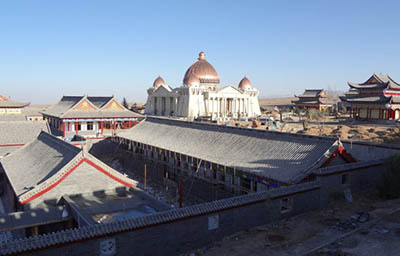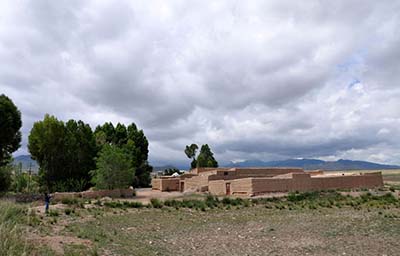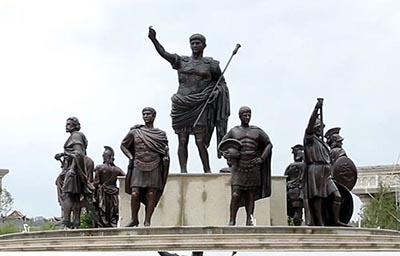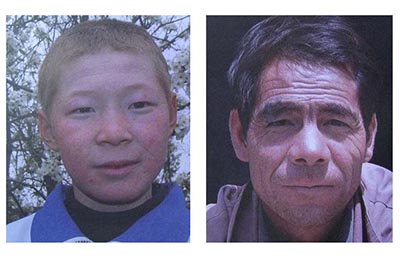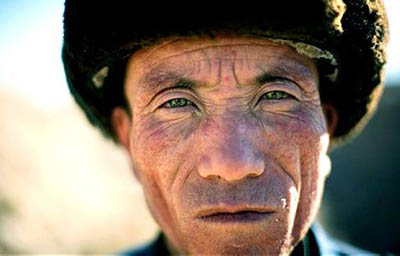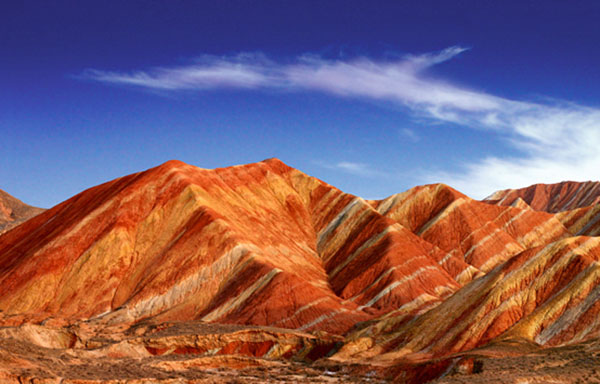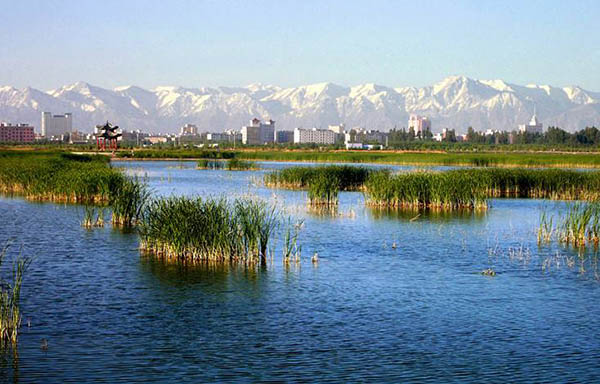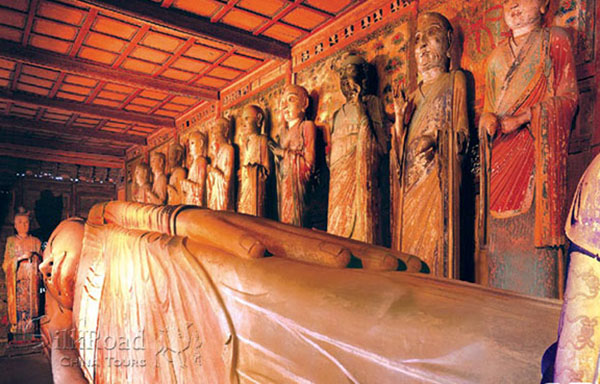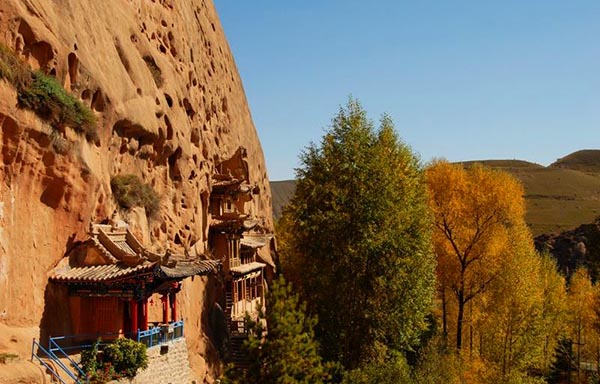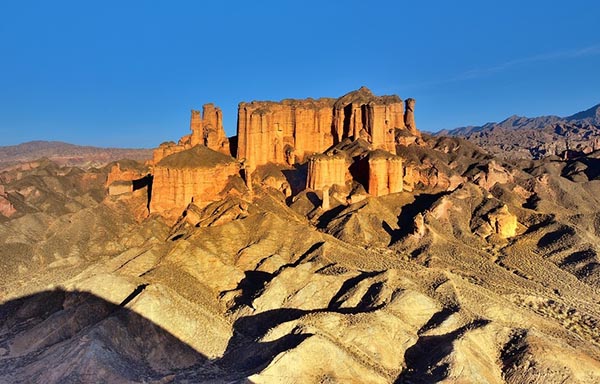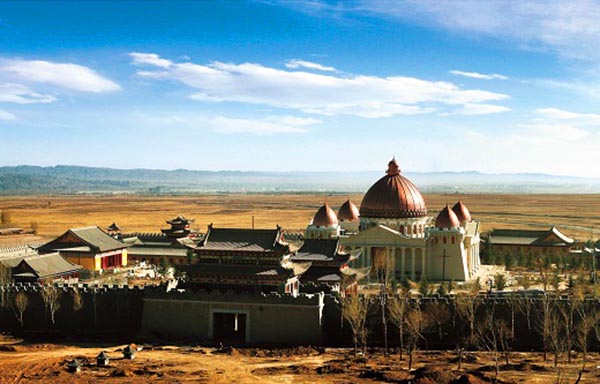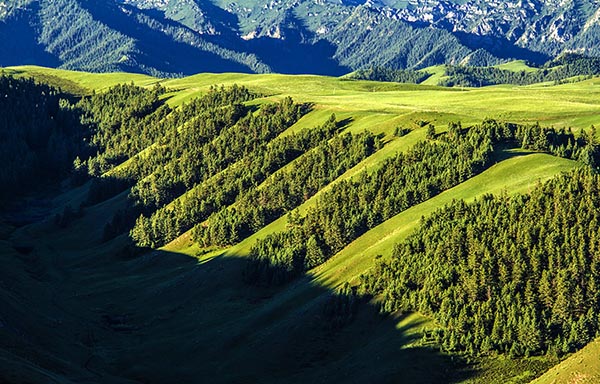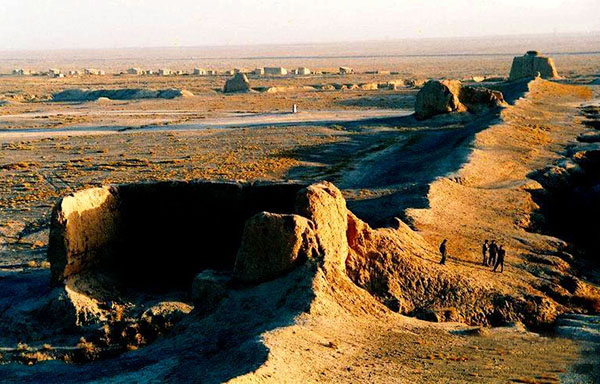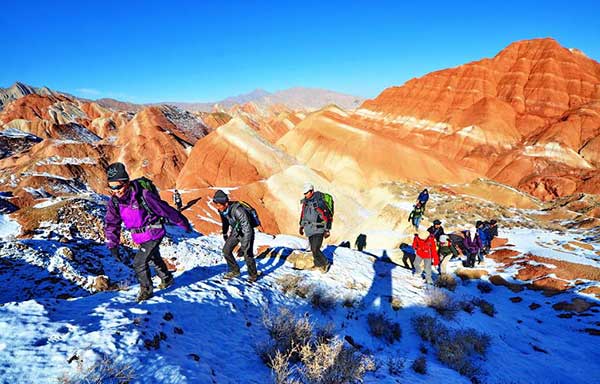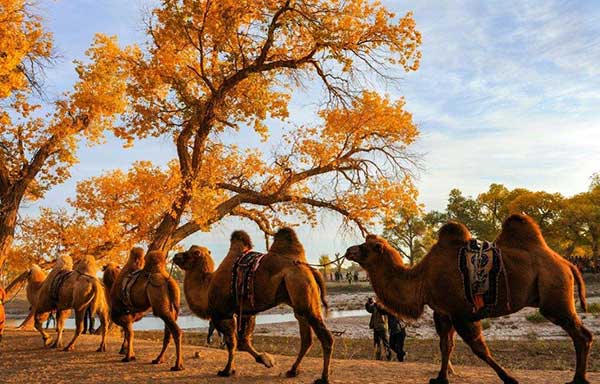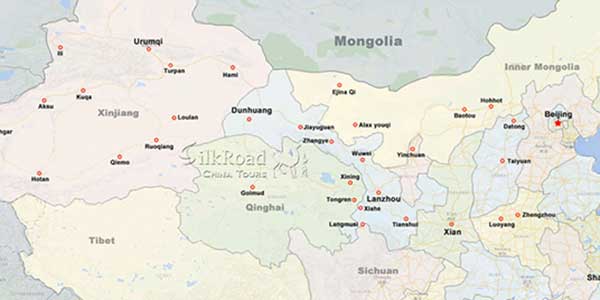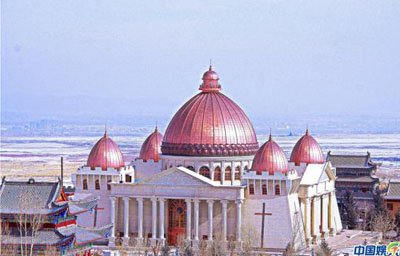 Liqian (骊靬), currently known as Zhelaizhai (者來寨), is a small rural town in the Gansu province on the edge of the Gobi Desert. Liqian is located at more than 160 km from zhangye city, and more than 60 km from the closest city, which is called Jinchang (金昌市).
Liqian (骊靬), currently known as Zhelaizhai (者來寨), is a small rural town in the Gansu province on the edge of the Gobi Desert. Liqian is located at more than 160 km from zhangye city, and more than 60 km from the closest city, which is called Jinchang (金昌市).
Walk in Zhelaizhai Village in Yongchang County of Jinchang City in Gansu Province, and you may be surprised at the appearance of some local dwellers. They look like Europeans to some degree and they keep some customs which are different to Chinese Han People. Are they totally sure of their Han identity?
Legend says that during the Western Han Dynasty (206 BC-24 AD), a group of several thousand exiled Roman soldiers surrendered to the Han Court which settled them in Zhelaizhai Village, (also called Liqian City by local people). They lived a peaceful life from then on. The local villagers with typical European looks are said to be their descendants. They love oxen very much. The offerings made into ox shapes are regarded as the best and noblest and they always enjoy bullfighting games. These traditions are said to be from ancient Rome.
Behind the courtyards in the west of the village, there is a broken section of the old city wall built in an "S" shape. This measures 11 yards long and three feet tall. Scientists have pointed out that this insignificant mud wall is part of the Liqian Ancient City Relic. Near the wall stands a white pavilion, built in ancient Rome architectural style.
Near No.312 national highway in Yongchang County, erected on a high base, are three granite statues of ancient Romans. In front of the statues, four big characters "Liqian Huaigu", meaning "Meditations on the Liqian Ancient City", are chiseled.
However, there is no final conclusion on the issue of whether or not the local villagers are the descendants of the Roman army. There are also many other arguments on the related topics. After all, this is a complicated problem involving many disciplines such as the science of history, anthropology and archaeology. Experts are doing further researches and studies to draw a conclusion as soon as possible.
The history of Liqian
Around the year 58 A.D. the richest man in Rome, Marcus Licinius Crassus, who formed part of the Roman triumvirate with the no less illustrious Gaius Julius Caesar and Gnaeus Pompeius Magnus, decided to start a war, without the authorization of the senate, against the annoying Parthians who were making a killing on the trade on the Silk Road. In other words, Crassus wanted to kill the intermediary.
Crassus launched a powerful army of around 50,000 men towards Mesopotamia. What Crassus didn’t expect was that the Parthians had an army of horseback archers which was very effective against the Roman legions. The result of the war was a massacre and one of the most humiliating defeats of Rome. The Parthians killed 20,000 Roman soldiers, including Crassus and his son, and captured 10,000 more in what is called the Battle of Carrhae.
The destiny of the 10,000 legionnaires which were taken prisoner remains a mystery, and because of this, they are called the Lost Legion. Nonetheless, it is believed that they were sent to protect the eastern border of the Parthian Empire (in what is now Turkmenistan).
The Lost Legion, which had been enslaved and forced to protect a border which was very far from home, had the luck to be captured once again by the Xiongnu who disputed the region with the Parthians and were enlisted into the ranks of the powerful Hun army.
This is how, according to Dubs, the Lost Legion reappeared twenty years later (in the year 36 A.D.) in the Battle of Zhizhi between the Chinese and the Xiongnu in what is now the Gansu province. Chinese chronicles talk of the capture of strange soldiers, long-time veterans and who fought perfectly organized into a “fish scale formation” which Dubs thinks is a reference to the testudo (or tortoise) formation typical of Roman legions. The foreign soldiers captured by the Chinese were deported and settled in some place near the current town of Liqian.
This is how the poor legionnaires, after being beaten and captured by the Parthians, relocated to the other end of the world, recaptured and recruited by the Xiongnu and captured for the third time by the Chinese, decided to dedicate themselves to something else and founded the town of Liqian.
Gallery
Attractions in the area
Related Tours
General Information
Alias: No
Loc: 68 km from Jinchang
Entrance: 0 RMB
Open Time: 09:00 - 17:00
Relevant blogs
-
How did the name of Tianshui in Gansu come about?
The name Tianshui is very pleasant to the ear, and it reminds one of that exquisitely beautiful verse, "After getting drunk, one doesn't know if the sky is in
-
The 8th Silk Road Hotel Festival was successfully held i
On December 27th, the "8th Silk Road Hotel Festival" grandly opened at the Yujing International Hotel in Zhangye. This hotel festival gathered industry experts,
-
The Karez Irrigation System in Turpan has been selected
On September 3rd, at the 75th Executive Council Meeting of the International Commission on Irrigation and Drainage held in Sydney, Australia, the 2024 (11th bat
-
What is the connection between "dragons" and "snakes
In traditional Chinese culture, the snake has a dual identity of auspiciousness and danger. Ancient people believed that the snake not only possesses divine cha
-
Endangered Przewalski's Horses Spotted at Dunhuang Yume
<p>In early February, a group of special "visitors"—the Przewalski's horses—appeared at the Dunhuang Yumen Pass scenic area in Gansu Province, a U
-
The Fourth Dunhuang Cultural Tourism Supplier Conference
On the morning of February 18th, the Fourth Dunhuang Cultural Tourism Supplier Conference in Northwest China commenced at the Dunhuang International Convention

